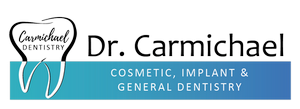Post Operative Instructions
Nothing makes us so beautiful as our smiles.
Post Operative Instructions
The post operative instructions will give you general guidelines to help you heal and avoid any complications. If the problem or pain does not go away, please call us as soon as possible. We strive to make your recovery as smooth and pleasant as possible.
- It is normal to have some cold and heat sensitivity after teeth cleaning.
- Brush your teeth lightly as the gums may be tender which will cause bleeding.
- Keep up with your regular brushing and flossing to avoid a new tartar (calculus) built up.
- You might experience some bleeding the next day or two after cleaning, it is considered normal but if it is an excessive bleeding then call our office.
- If your fillings preparation required numbing, do not eat until the numbing wears off. But you can drink fluids.
- You might feel slight temperature sensitivity and pressure in the first few days after treatment. It should disappear within 72 hours, but the time frame can depend on the size and depth of the filling. If sensitivity does not go away in a few days or weeks or it hurts when you bite or chew on the tooth, may indicate a more serious condition, please call the office so we can check it promptly.
- Often, when decay is deep and it nears the pulp (nerve) of the tooth, a pulpitis (inflammation of the pulp) develops. More often than not, the tooth returns to normal sensations and comfort, other time though the tooth may require a root canal (removing the irreversible inflamed, damage or dyeing nerve).
- It’s also normal to experience a slight soreness around the gum — especially at the anesthesia injection site. This may last for several days. Consider doing salt water rinses. Mix 2 tea spoon table salt with 8 oz. of warm water and rinse for about 30 seconds. Repeat this 2-3 times a day for several days. This should help the healing process.
- If after the numbing wears off and or you notice the bite does not feel right –feels high or you are hitting one particular tooth, call our office and we will schedule an appointment to smooth off and correct the bite to make you comfortable.
The crown and bridge procedure takes two visits. The first visit includes preparation of the teeth and placement of a temporary crown. The second visit is to custom fit and cement the permanent crown.
- The temporary crown/temporary bridge is placed in patients’ mouth for approximately 2 – 3 weeks.
- The temporary crown/temporary bridge is placed with cement temporarily (this adhesive will be removable with minimum effort).
- Avoid sticky and hard foods while temporary crown or temporary bridge is in the mouth.
- If temporary crown or bridge comes off, please call the office to get the crown or bridge to be re-cemented or for further instructions from the doctor.
- Expect gums to be sore or tender for a few days after procedure preparation. You may also experience muscle/jaw pain from holding your mouth open. Ibuprofen (Advil) or Tylenol, along with warm salt water rinses, will reduce these symptoms.
- It is common for your tooth to be sensitive to cold, hot and sweets while wearing a temporary crown.
- It is important to continue to brush normally, but modify your floss technique. In that area, carefully pull the floss between the teeth as usual, but then pull the floss out from the side.
- It is possible that your bite may not feel right once numbing wears off. In that case call the office to schedule a short adjustment appointment.
- You will be wearing a temporary crown until the final restoration is placed. At your second visit, we will custom fit and cement your crown.
- We advise you to not eat or drink for hours after this visit to allow the cement to completely set.
Immediately after surgery:
- To limit bleeding, firmly bite on moist gauze and change it every 60 minutes until the gauze is a faint, light pink color.
- Remove gauze before eating or sleeping.
- Place a bag of ice on your face while awake, flipping the bag every 30 minutes.
- Patients should remain upright to mitigate swelling. Napping or resting on a recliner or while leaning against several pillows is encouraged.
- Swelling is normal during the first two to three days following surgery.
General instructions for the day of surgery:
- Rest and limit your activity for the first 24 hours after surgery.
- DO NOT rinse or spit vigorously the first day after surgery unless instructed otherwise.
- We encourage a cool, soft diet. This may include yogurt, pudding, ice cream, or Jell-O and you should eat some type of snack 15 to 30 minutes prior to taking your pain medication.
- DO NOT SMOKE or consume alcohol for seven days after your surgery. Smoking and alcohol intake are the main causes of dry sockets.
- DO NOT drink with a straw for one week after your surgery.
- Continue taking medication as prescribed. The anesthesia should last two to three hours on your upper jaw and eight to twelve hours on your lower jaw.
- At the first sign of discomfort or prior thereto, eat a snack followed by your prescribed medication, acetaminophen, or ibuprofen. Repeat every four hours as needed for pain.
- Keep your lips moist using Vaseline.
Second day instructions:
- Continue resting and limit your physical activities.
- Do not engage in vigorous exercise (such as weight lifting, jogging, or hard manual labor) for four days after your surgery.
- Brush teeth up to the surgical site(s) for the first week. Begin rinsing your mouth on the second day unless you’ve been instructed otherwise using ¼ teaspoon of salt in an eight-ounce glass of warm water. Rinse five to six times daily for the first week. Begin rinsing with a non-alcohol-based mouthwash the day after surgery. Continue use until your one-week, post-op visit.
- If bleeding persists enough that gauze still turns red when you bite on it, call the office.
- If the gauze is pink, biting down on moist gauze using firm pressure for several 30-minute intervals should stop the bleeding.
- Continue eating a soft diet, but warm foods are okay to eat at this point.
- After the second day post-surgery, you can eat whatever you can tolerate.
- Most sutures will begin to dissolve within five to ten days.
Potential Complications:
Dry sockets: Dry sockets develop when the extraction site is slow to heal, causing pain that generally emerges on the third or fourth day after surgery. Symptoms include pain in the jaw, ear, head, or your entire face. Treat this pain using pain medication or an ice pack. If after 48-72 hours, you’re still having pain that requires medication, you probably have a dry socket. At this point, you should contact our office for further relief.
Sore teeth: Sometimes, teeth adjacent to the surgical area will shift slightly, causing soreness that can last for several days. If this does not improve, please bring it to our attention at your one-week, post-op visit.
Drug reaction: If you experience adverse effects from pain medication such as nausea, vomiting, diarrhea, hives, or itching, discontinue the drugs and call the office.
Temperature sensitivity: Occasionally, teeth adjacent to the surgical area are sensitive to thermal changes for six to eight weeks following surgery. If this sensitivity persists beyond that time, please contact the office.
Post operative infections: Usual symptoms of an infection are swelling and pain. If you experience this, begin rinsing your mouth with warm salt water and contact our office for antibiotics and/or an appointment.
Your gums may be tender or sensitive following the treatment. The following information and procedures will help ensure healing and a quick recovery.
- Rinse with warm salt water once or twice a day for the first day or two. Use about 1 tsp. salt to ½ cup warm water.
- Take an over-the-counter medicine containing ibuprofen (Advil or Motrin). If you are allergic to ibuprofen or aspirin, you should take Tylenol instead. Take any prescriptions that may have been given as directed.
- You might experience slight bleeding during the next few days, but it should decrease after the second or third day.
- Your teeth may be sensitive to temperature changes. This sensitivity may be intense at first but will typically diminish over the next few weeks. You may use sensitive toothpaste such as Sensodyne to help with sensitivity.
- You should clean your teeth as instructed. Removing the bacterial plaque from your teeth every day is the best way to ensure your gums will heal. Initially, you may experience mild tenderness and bleeding during brushing. This is normal. Continue brushing with a soft bristle toothbrush and cleaning in between your teeth with floss or a proxy brush.
- If plan, bleeding, or sensitivity persist or are unbearable, please contact us.
- Patients occasionally develop a periodontal abscess following scaling and root planing. If you notice a painful swelling on your gums, let us know as soon as possible.
- Avoid eating hard foods that require a lot of chewing pressure, tart or spicy foods, nuts, chips, or popcorn. Drink plenty of fluids the first 48 hours after surgery
- Your treatment is not complete. We will work with you to maintain your dental health by seeing you for periodontal maintenance.
- Do not brush or floss treated area for at least 4 hours after treatment
- Remain on a soft-food diet for 1 hour; avoid hard, hot, or sticky foods and products containing alcohol (oral rinses, beverages, etc.) during the treatment period
- Avoid using other products containing fluoride (mouthwash, gels, pastes) until 4 hours after treatment. It is normal for the fluoride varnish to gradually wear off the tooth surface after treatment. The varnish can also be removed after 4 hours by brushing and flossing.
- Keep opalescence whitening system products out of reach of small children.
- Do not swallow gel or rinsed gel. The product contains peroxide and may contain fluoride; swallowing large amounts can be harmful.
- A small percentage of patients experience sensitivity with whitening. Should this occur, remove the tray and contact your dentist.
- Foods and juices high in citric acid can cause sensitivity to the teeth.
- Some patients have notices temporary discomfort of the gums, lips, throat, or tongue. Should any of these symptoms persist more than two days or progressively worsen, call your dentist. These side effects will usually subside within 1-3 days after treatment is discontinued.
- Coffee, tobacco, and other products can restain your teeth over time. Should this occur, the teeth can be rewhitened within a few nights with Opalescence whitening gel.
- Regular dental checkups and cleaning are important before and after whitening to maintain a healthy smile.
- Some old amalgam or “silver” fillings may leave a dark purple color in your whitening tray. This is normal.
- Crowns, bridges, partial dentures, veneers, and composite fillings will not whiten.
- Store whitening gel out of the sun and heat. Refrigeration is recommended. Do not freeze.
- Discard any unused whitening gel after treatment is completed.
Scaling and root planing are done when a patient has gum disease. They are two different procedures, but they are usually done at the same time. Scaling is a thorough cleaning of bacteria, and food particles from the pockets that form between gums and teeth. Scaling also removes the plaque and tartar from the surface of the teeth and from below the gum line. Planing is a thorough cleaning of the roots of the teeth. The procedure also removes bumps from the surface of the root. After a scaling and planing, your gums may be sore and irritated.
- Do not brush your teeth for the first 24 hours after treatment; after the first 24 hours you can then brush your teeth very gently with a very soft brush, after the first week, you can return to your normal brushing routine
- Wait at least two hours before eating, and then only eat soft foods for 48 to 72 hours; in order to avoid any further dental scaling or planing pain, try to chew on the opposite side of where the work was done
- If your gums are very sensitive, switch to Sensodyne™ or another toothpaste formulated for tooth sensitivity
- Avoid using any mouth rinse that contains alcohol
- If you were prescribed antibiotics, it is important to take them all, even if you are feeling better
- It is perfectly normal to have some discomfort during the first few days; over the counter pain relievers are very helpful during this time and are encouraged to help you manage the dental scaling and planing pain
- Rinsing your mouth with salt water 2-3 times per day will also help reduce the swelling or dental scaling or planing pain
- If anesthesia was used during your treatment, avoid chewing until the numbness is gone
- Avoid consuming hot or cold drinks, spicy foods and alcohol until your gums have healed
- Additionally, tobacco has been found to slow down the healing process after periodontal scaling or planing procedures; try not to smoke for at least 72 hours after the procedure
- Should you happen to experience abnormal bleeding, sensitivity, or unmanageable scaling or planing pain beyond the first 72 hours, it is important to call the office to ensure that there are no other issues.
General instruction
- Bite on gauze for 30 minutes without changing it.
- Do not disturb the area with fingers or by sucking on it.
- No rinsing or spitting the first day.
- Do not use drinking straw or smoke for 3 days.
- The next day, start rinsing with warm salt water, or warm water, but very gently.
- Try not to disturb the extraction site.
Diet
- High fluid intake is very important.
- After the gause is removed, the patient may have something soft to eat, such as instant breakfast, milkshakes, or yoghurt.
- A normal diet should be resumed as soon as possible.
- Please note: Pain pills should not be taken on an empty stomach.
Pain
- Take a pain pill after removing the gauze and before the anesthetic disappears.
- From there on, please follow the directions on the prescription.
Bleeding
- Some bleeding is normal following all procedures for 24-48 hours.
- However, excessive bleeding should be controlled.
- Place a sterile gauze, or a warm moist tea bag over the wound and hold firmly 45 minutes by closing your teeth together.
- If bleeding does not subside, call us for further instructions.











